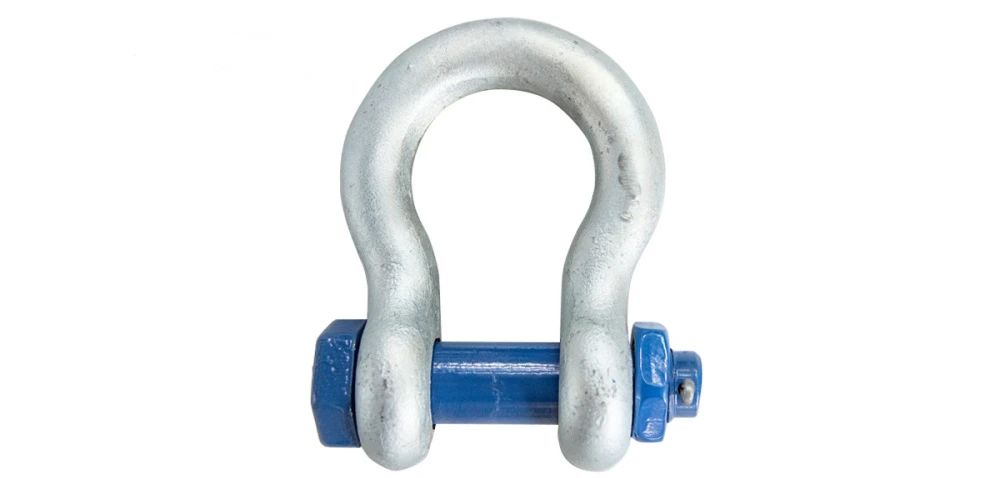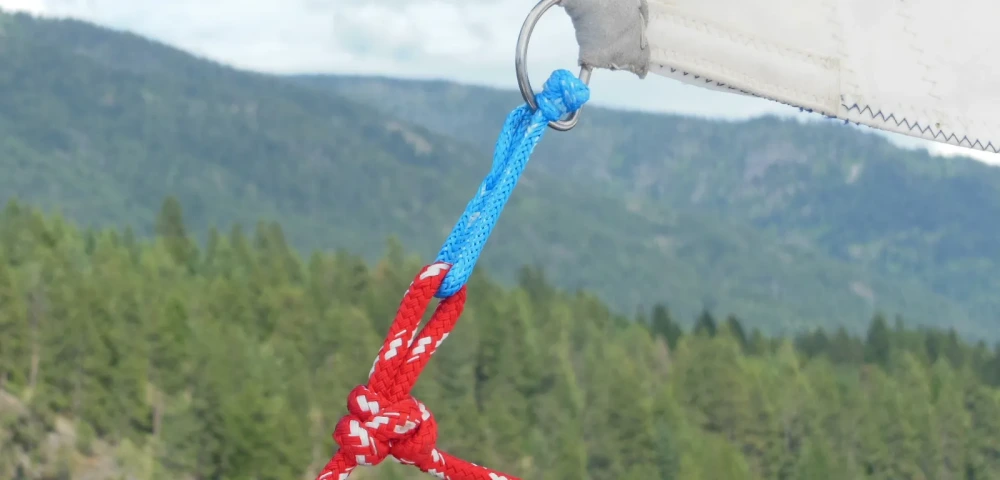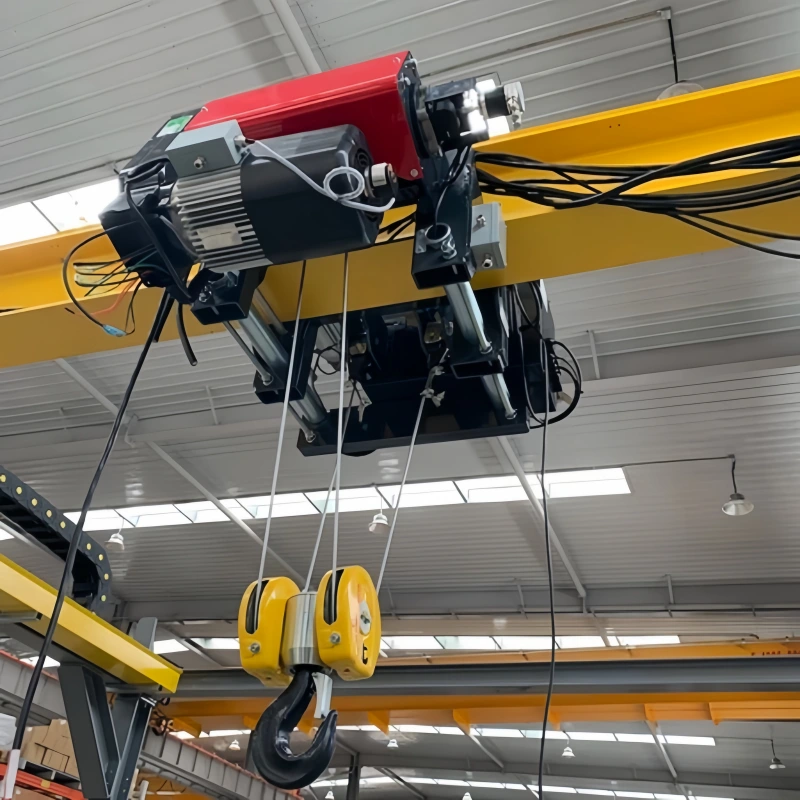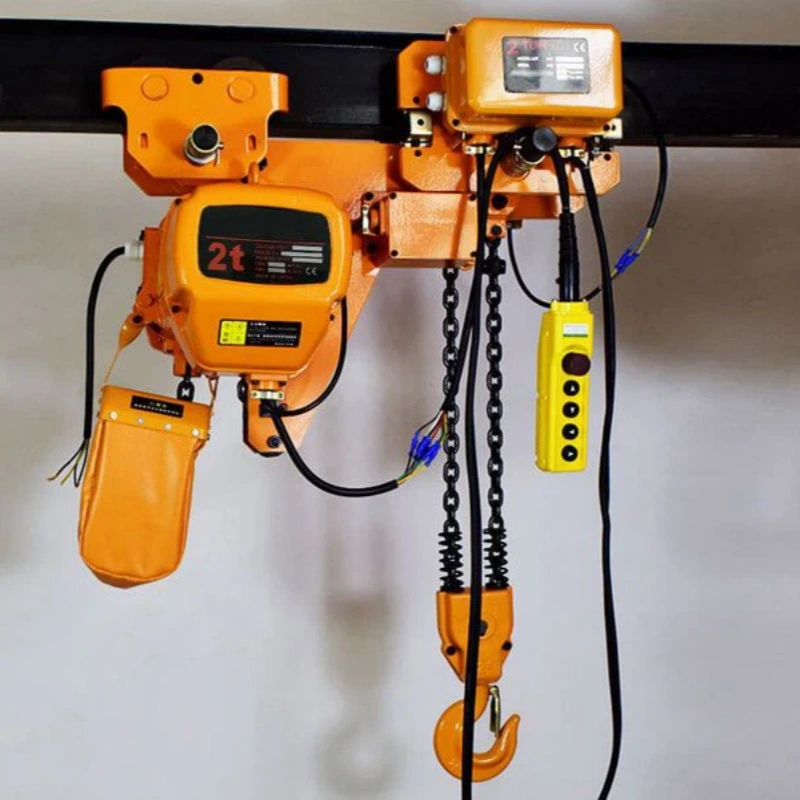Choosing between soft shackles and bow shackles for 4wd recovery shackles depends on your specific off-road needs. For most off-road vehicle recovery, you should prioritize safety and use certified products.
Soft shackles offer lightweight handling, but you must match them to proper recovery points and avoid low-quality options, as failures can cause severe accidents.
Bow shackles provide consistent strength and durability. Powerful Machinery delivers certified, high-performance shackles trusted by professionals worldwide.
Feature | Soft Shackle | Bow Shackle |
|---|---|---|
Safety | Medium | High |
Strength | Varies | Consistent |
Cost | Lower | Moderate |
Durability | Good | Excellent |
Ease of Use | Easy | Moderate |
Key Takeaways
Choose soft shackles for lightweight handling and safety in off-road recovery. They reduce injury risk if they fail.
Select bow shackles for heavy-duty tasks and sharp edges. They provide consistent strength and durability.
Always match your shackle type to the recovery points on your vehicle. Soft shackles work best with smooth surfaces, while bow shackles suit rough edges.
Inspect your shackles regularly for wear and damage. Ensure they meet the working load limit for safe operation.
Invest in certified products from trusted brands like Powerful Machinery for reliable performance in recovery situations.
Bow Shackle Overview

Construction & Materials
When you choose a bow shackle for 4wd recovery shackles, you select a hard shackle built for strength and reliability. Most hard shackles use high-quality materials such as carbon steel, alloy steel, stainless steel, or galvanized steel. Each material offers unique benefits for different environments and applications.
Material | Strength | Corrosion Resistance | Typical Applications |
|---|---|---|---|
Carbon Steel | High | Moderate | Construction, cargo handling |
Alloy Steel | Very High | Moderate | Heavy industry, mining |
Stainless Steel | High | Excellent | Marine, chemical, outdoor |
Galvanized Steel | Moderate | Good | Outdoor, general rigging |
Powerful Machinery’s stainless steel shackles stand out in marine and outdoor settings. You get excellent corrosion resistance and a smooth finish, making them ideal for demanding recovery tasks.
Strength & Ratings
You need to trust your hard shackle during a recovery. Bow shackles used for 4wd recovery shackles must be load rated. You will see the rating marked as WLL (working load limit) or SWL (safe working load) on the shackle body. For most vehicle recovery, a minimum rating of 3.25t is recommended for attaching straps.
For heavier tasks, such as using a tree trunk protector, a 4.75t rating is better. Powerful Machinery’s metal shackle range meets strict international standards, giving you confidence in every pull.
Durability & Lifespan
The average lifespan of a well-maintained hard shackle is between 5 to 10 years. Factors that affect its durability include rust, the quality of materials, maintenance practices, and environmental conditions.
With regular inspection and care, your screw pin bow shackle will serve you reliably for years, even in tough off-road conditions.
Advantages of Bow Shackles
Bow shackles offer several key advantages over other types of hard shackles:
Advantage | Description |
|---|---|
Load Direction | Bow shackles can withstand loads from various directions due to their circular design. |
Compatibility | Their rounded shape allows for compatibility with thicker straps. |
Multi-Sling Handling | Bow shackles can handle multiple slings and loads from various directions. |
Stress Distribution | They excel in applications involving distributive loads, minimizing stress concentration. |
Angulation | The rounded structure allows for angulation without significant strength loss. |
You benefit from a metal shackle that adapts to complex recovery setups and distributes force safely.
Disadvantages of Bow Shackles
While hard shackles are strong, some users report issues in extreme conditions:
Deformation under heavy load can occur if you exceed the rated capacity.
Side loading may cause the pin to pull out if not properly aligned.
Some generic metal shackle models may deform quickly under stress.
Always choose certified products from trusted brands like Powerful Machinery to avoid these problems.
Best Uses for Bow Shackles
Bow shackles are recommended in situations where there are sharp edges or potential for abrasion, as soft shackles can be vulnerable in such conditions.
You should use a hard shackle when you recover vehicles with rough or abrasive recovery points. Metal shackles also work best when you need to connect to steel recovery points or handle multiple straps. Powerful Machinery’s bow shackles give you the durability and safety you need for demanding 4wd recovery shackles.
Soft Shackle Guide

Construction & Materials
You use soft shackles as flexible connectors in 4wd recovery shackles. Manufacturers craft soft shackles from high-strength synthetic fibers, such as Spectra or Dyneema.
These fibers give you impressive strength while keeping the weight low. Unlike metal shackles, soft shackles resist corrosion and do not rust, making them ideal for wet or salty environments.
Feature | Soft Shackles | Metal Shackles |
|---|---|---|
Material | High-strength synthetic fibers | Steel |
Weight | Lighter | Heavier |
Strength | Tensile loads rivaling/exceeding steel | Standard steel strength |
Corrosion Resistance | Impervious to corrosion | Prone to corrosion |
Handling | Easier to handle | More cumbersome |
Safety | Enhanced safety in recovery situations | Standard safety |
Strength & Ratings
Soft shackles deliver impressive strength for their size. You often see working load limits that match or exceed those of steel bow shackles. Most soft shackles for 4wd recovery shackles have a WLL of 3 tonnes or more.
However, you must inspect them regularly, as abrasion and wear can reduce their strength over time. Soft shackles can break if used against sharp edges or if their rated capacity is exceeded.
Soft shackles and bow shackles can have the same working load limit.
Soft shackles are lightweight and easy to store.
They are prone to abrasion damage, especially on rough surfaces.
Bow shackles maintain their strength better over repeated use.
Durability & Lifespan
You benefit from the lightweight nature of soft shackles, but you must remain aware of their moderate durability. Soft shackles last less time than metal shackles, especially if exposed to frequent abrasion or sharp recovery points. You may need to replace them more often to ensure safety.
Type of Shackle | Durability | Expected Lifespan | Weight | Risk of Injury |
|---|---|---|---|---|
Metal Shackles | High | Long | Heavy | High |
Soft Shackles | Moderate | Shorter | Light | Low |
Advantages of Soft Shackles
Soft shackles offer several advantages that make them popular among off-roaders:
You handle them easily due to their light weight.
They reduce the risk of injury, as they do not become dangerous projectiles if they fail.
You attach and remove them quickly, even in muddy or cold conditions.
They do not scratch or damage vehicle surfaces.
Soft shackles also minimize the overall weight of your recovery gear, making your kit easier to carry and manage.
Disadvantages of Soft Shackles
Despite their benefits, soft shackles have some limitations:
They are susceptible to abrasion and damage from sharp edges.
You may find it difficult to open the eye after heavy loading.
Some knot designs, like the Diamond Knot, are weaker.
You must ensure proper installation, as incorrect use can reduce strength.
Removing material or using the wrong knot can compromise the integrity of soft shackles.
Best Uses for Soft Shackles
You should use soft shackles when you need a lightweight, quick, and safe connection for 4wd recovery shackles. They excel in situations where you want to avoid scratching paint or damaging recovery points.
Soft shackles work best with rounded or smooth recovery points and synthetic straps. For harsh or abrasive environments, consider using metal shackles instead.
Powerful Machinery remains committed to quality and safety, ensuring that every soft shackle meets strict standards. When you choose soft shackles from a trusted source, you gain peace of mind for every recovery.
Soft Shackle vs Bow Shackle: Comparison

Safety & Projectile Risk
When you consider safety during off-road recovery, the risk of injury from equipment failure becomes a top concern. The material and design of each shackle type play a major role in this risk.
Type of Shackle | Material | Safety Risks |
|---|---|---|
Soft Shackles | Synthetic fibers | Lower risk of injury if they fail |
Bow Shackles | Forged steel | Higher risk of becoming projectiles if they break under load |
A soft shackle, made from synthetic fibers, reduces the risk of injury if it fails. If a soft shackle breaks during a recovery rope operation, it usually drops to the ground. In contrast, a bow shackle can become a dangerous projectile if it fails under tension. The heavy steel can cause severe injury or damage.
Projectile risk: This is a huge red-flag issue. If a soft shackle hits you at 100km/h in the head when it breaks, you’re probably gonna live to fight another day. Hard shackle hits you – it’s lights out, no afterwards. That’s the salient risk here.
Steel shackles can also become dangerous projectiles if they fail or if a strap comes loose. That added weight makes them less forgiving in the event of sudden release.
For maximum safety, always use certified shackles from Powerful Machinery. You protect yourself and your team by choosing equipment designed to minimize risk.
Strength & Load Ratings
Both soft shackle and bow shackle options offer impressive strength, but you must match the right product to your recovery rope and vehicle weight. A soft shackle can match or even exceed the working load limit of many steel shackles.
You often see soft shackles rated for 3 to 5 tonnes, making them suitable for most off-road recovery situations.
Bow shackles provide consistent strength due to their forged steel construction. You find clear markings for working load limits on every certified bow shackle from Powerful Machinery. This clarity helps you select the right shackle for your recovery rope and ensures safe operation.
You should always check the load rating before every use. Never exceed the working load limit, and always align the load properly to maintain the shackle’s capacity.
Durability & Abrasion Resistance
Durability matters when you use shackles in harsh environments. A bow shackle, made from forged steel or stainless steel, resists abrasion and impact. You can use it repeatedly in rough conditions without significant wear.
A soft shackle, while strong, is more vulnerable to cuts and abrasion. Off-road recovery often involves sharp edges, rocks, or rough recovery points. In these cases, a soft shackle may wear out faster than a bow shackle.
You should inspect your soft shackle before and after every use, especially if you use it with a recovery rope in abrasive conditions.
Powerful Machinery’s bow shackles offer excellent abrasion resistance and long service life. You can rely on them for repeated use in demanding environments.
Cost & Value
When you compare costs, you notice that a soft shackle is generally more expensive than a bow shackle. In some cases, a soft shackle can cost up to four times more than a comparable steel shackle.
However, many users find that the safety, light weight, and ease of use of a soft shackle provide better value for money in specific situations.
Soft shackles are generally more expensive than bow shackles.
Soft shackles can cost up to four times more than comparable d-ring shackles.
Users find soft shackles to be safer, lighter, and easier to mount compared to bow shackles, suggesting they offer better value for money in specific situations.
Some users believe that while soft shackles are advantageous, bow shackles are still essential for certain recovery scenarios, indicating a nuanced view on value for money.
Users acknowledge that soft shackles can be weaker links in recovery systems, emphasizing the importance of choosing reputable brands, which relates to perceived value for money.
You should always invest in certified products from Powerful Machinery to ensure you get the best value and safety for your off-road recovery gear.
Weight & Handling
Weight and handling affect your experience during off-road recovery. A soft shackle weighs much less than a bow shackle. You can carry several soft shackles in your kit without adding bulk. Handling a soft shackle is easy, even in mud or cold weather.
You can attach and remove it quickly from your recovery rope or recovery points.
A bow shackle, while heavier, offers a solid feel and is easy to use with gloves. The extra weight can be a drawback if you need to carry multiple shackles or want to minimize your gear load. However, the robust construction of a bow shackle gives you confidence in tough recovery situations.
Risk Factors
You must understand the risk factors for both types of shackles to use them safely.
Risk Factor | Description |
|---|---|
Improper Pin Use | Replacing the shackle pin with a bolt can lead to bending under load. |
Angle of Pull | Pulling a shackle at an angle can cause the legs to open. |
Unscrewing Pins | Using screw pin shackles in contact with moving parts can lead to unscrewing if the load shifts. |
Overhead Lifting | Round pin shackles restrained only by a cotter pin should not be used for overhead lifting. |
Damaged Shackles | Shackles with bent pins or deformed bodies should not be used. |
Forcing Shackles | Forcing or hammering shackles into position can compromise their integrity. |
Angle Limit | Exceeding 120 degrees for the angle when using multiple leg slings is unsafe. |
Never exceed the Working Load Limit (WLL) to prevent failure and injury.
Align loads properly to maintain the shackle’s capacity.
Avoid shock loading to prevent catastrophic failure.
Extreme temperatures and chemical exposure can also affect shackle performance. Cold can make metal brittle. High heat can reduce strength. Chemicals can degrade both steel and synthetic fibers. You should always inspect your shackles and follow manufacturer guidelines.
Powerful Machinery provides certified shackles that meet strict international standards. You can trust these products for reliable performance in every off-road recovery scenario.
Choosing the Right Shackle
Recovery Scenarios
You face many different situations during vehicle recovery. The right shackle depends on the type of recovery, the terrain, and the equipment you use. For quick, lightweight connections between ropes or straps, a soft shackle works best.
If you need to connect to a steel recovery point or handle sharp edges, a bow shackle offers more protection and durability. Consider the environment as well. Wet or salty conditions favor a soft shackle, while rocky or abrasive areas call for a bow shackle.
Criteria | Soft Shackles | Bow Shackles |
|---|---|---|
Material | Made from HMPE, a strong synthetic line | Made from metal, typically heavy and durable |
Weight | Lightweight, safer in case of line failure | Heavier, can pose a hazard if failure occurs |
Surface Damage | Will not damage surfaces they attach to | Can damage surfaces if not used carefully |
Sharp Edge Suitability | Ideal for smooth connection points | Best for sharp edges and rough connection points |
Use Case | Connecting line to line, non-sharp edges | Fixed to vehicle connection points |
Matching to Recovery Points
You must match your shackle to the recovery points on your vehicle. The design and shape of these points matter. Soft shackles work best with rounded recovery points.
They prevent abrasion and extend the life of your gear. Bow shackles fit traditional steel recovery points, especially those with hard right angles or rough edges.
Many steel bumpers have recovery points designed for bow shackles. Using a soft shackle on these can lead to cuts or damage during vehicle recovery. Always inspect your recovery points before choosing your shackle.
Safety Tips
Always use top-quality gear in good condition. Make sure your shackles are rated for your specific vehicle recovery needs.
Practice using your recovery gear before you need it.
Properly inflate your tires to avoid getting stuck.
Learn about different terrain types to prepare for challenges.
Plan your route and know your surroundings.
Maintain your vehicle and recovery equipment regularly.
Never use worn-out or damaged shackles. Replace any gear that shows signs of wear. Choose equipment from trusted brands like Powerful Machinery to ensure safety and reliability.
Decision Checklist
You can use this checklist to select the right shackle for your next vehicle recovery:
Inspect your recovery points for sharp edges or rough surfaces.
Choose a soft shackle for smooth, rounded recovery points and lightweight needs.
Select a bow shackle for steel recovery points or when dealing with sharp edges.
Check the working load limit of your shackle and match it to your recovery gear.
Inspect all equipment before use for signs of wear or damage.
Carry both types of shackles in your kit for maximum flexibility.
Trust certified products from Powerful Machinery for peace of mind.
Tip: A well-chosen shackle improves safety and efficiency during every vehicle recovery.
Conclusion
You should select soft shackles for safety, lightweight handling, and versatility in most off-road scenarios. Bow shackles remain the top choice for side loading and heavy-duty tasks, especially when you need multi-directional force management.
Off-road recovery professionals recommend matching your shackle to the situation and avoiding soft shackles near sharp edges. For your recovery essentials, always choose certified products from Powerful Machinery to ensure reliability and peace of mind.
Soft shackles excel in safety and ease of use.
Bow shackles handle heavy loads and side forces better.
Both types play a vital role in your recovery kit.
FAQ
What is the main difference between a soft shackle and a bow shackle?
You use a soft shackle made from synthetic fibers for lightweight, flexible connections. You choose a bow shackle made from steel for maximum strength and durability, especially with sharp or abrasive recovery points.
Can you use a soft shackle with any recovery point?
You should only use a soft shackle with smooth, rounded recovery points. Avoid sharp edges or rough metal surfaces, as these can damage the synthetic fibers and reduce the shackle’s strength.
How do you know if your shackle is safe to use?
You must inspect your shackle before every use. Look for signs of wear, deformation, or damage. Always check the working load limit and ensure it matches your recovery needs.
Do soft shackles require special maintenance?
You should rinse soft shackles with fresh water after use, especially in muddy or salty environments. Let them dry completely before storage. Regular inspection helps you catch early signs of wear.
Tip: Always carry both types of shackles in your recovery kit. This gives you flexibility for any situation.


